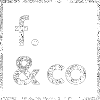28. Manifesto
In an era where one-way communications have become incapable, on their own, of making for the success of ideas, products and brands, the expressions of our intents must come in the form of authentic stories. Whereas collectives and communities build together, and with time, what authors like Cowan, David & Foray have called a codebook, exceptional individuals and visionaries tend to structure their purpose around a clear, shared and, most of the time, public, declaration. As they are often politically charged, scholars and observers have used the term manifesto to describe such artifacts.
The purpose beyond the manifesto is to shed light on an idea that may not be easy to grasp otherwise. In their recent reconfiguration, Montreal Space for Life’s 650 employees collaboratively drafted such a document. United in their willingness to understand, preserve and promote nature, the process has led to the identification and adoption of key values – audacity, openness, respect and integrity – that lie at the basis of Space for Life’s four pillars of success.
Though large organizations may find manifestos useful in their willingness to turn the ship around, such artifacts are most often used by smaller, nimbler organizations and proto-organization which do not need to rely on complex collaborative processes before publication. As such, some of the participants in the 2011 edition of the Summer School had come up with a manifesto entitled "On emptiness". Translated in both official languages, it was to serve as an inspiration for their peers when thinking about what was to become Montreal’s Innovation District.
In the history of creativity, we also find many such declarations of intent. André Breton’s two famed "Surrealist Manifesto" published in 1924 and 1929 are two such manifestos, the second one which led to Desnos’ famous response in which he admitted his contempt for Breton and called all surrealists to leave the movement: "I, who have some right to talk about surrealism, declare here that the surreal exists only for non-surrealists. For surrealists there is only one reality – unique, whole, and open to all".
Such pieces of anthology exist, in one way or another, for nearly every «movement» in the visual arts, as well as in literature, music, and assuredly, economics. Manifestos serve as boundary objects, stones thrown in the pond that may or may not make waves, dragging with them sufficient volumes to have a lasting impact. From Communism to Feminism, Dadaism or Cannibalism (?!), figures like Dali, Murakami, Trotsky and Debord have laid their ideas down, taking pen to paper, to put an end to a process. To start a new one.
"This is probably as close as we’ll ever get to writing a manifesto" was the introductory line to our "Guerrilla everything". Manifestos are still, and will remain, something to look forward to, to look back to. Join in. Send us yours!
This text is part of a series written in the context of the Fifth edition of the Montreal-Barcelona Summer School on Management of Creativity, organized by Mosaic HEC Montréal and Universitat Barcelona, July 9 to 24, 2013.
Illustration by Studio 923a. Read all posts in the series at blog.fandco.ca/yulbcn.


